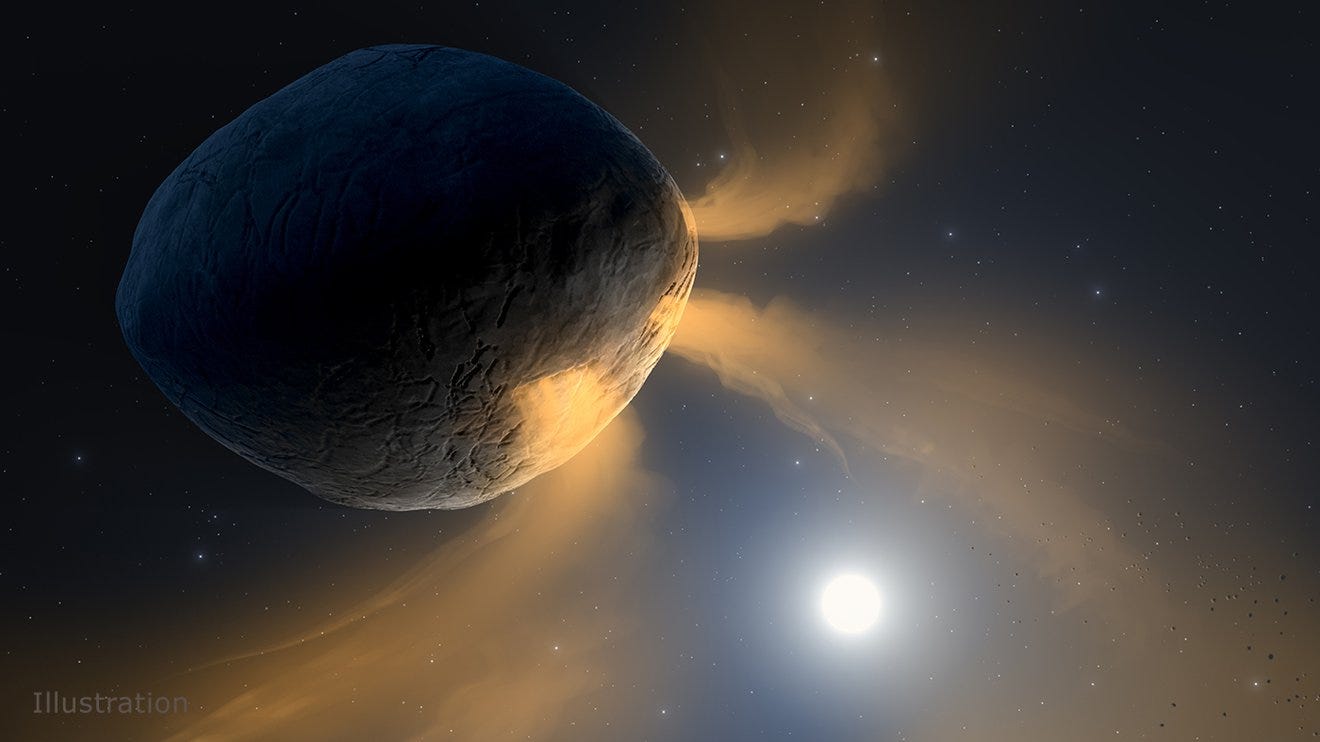Asteroid 3200 Phaethon, the origin of the dust that causes the Geminid meteor shower, may be losing sodium due to solar heating as it orbits.

Has everyone been enjoying the Perseids meteor shower this year? I know there are a lot of sky issues with rain (for people who still get rain) and smoke, but I have seen some great astrophotography images on Twitter. There were also a couple of reports of large outbursts from several monitoring systems, including SETI Institute’s Cameras for All-Sky Meteor Surveillance program. The shower is still going despite being past its peak, so please continue to try and do some meteor watching.
What causes a meteor shower? When comets pass through our inner solar system, they are heated up by the Sun, and the closer they get, the more they shed their icy particulates and dust. Those particles all stay in the same orbit as the comet, although they trail behind a bit. And if Earth’s orbit ever crosses the orbit of those particles, they hit our atmosphere and burn up on entry, creating the bright streaks we see during meteor showers. Some will even be slightly bigger pieces that create bright fireballs.
Since we can track these meteors back to their orbits based on how they hit the atmosphere and the direction they came from, we can track them back and possibly determine the comet that left the dust trail. We call this comet, as it relates to a meteor shower, the parent body. For the Perseids, the parent body is Comet Swift Tuttle, which was discovered in 1862 and orbits the Sun every 133 years in an elliptical orbit.
Of course, the Perseids aren’t the only big meteor shower we get to see throughout the year. Coming up in December, we will have the Geminids meteor shower. Now, the parent body of this particular shower is really interesting as it’s not a comet. I know. I said comets are what cause meteor showers, but this is that one exception to the rule. The Geminids are caused by asteroid 3200 Phaethon, and this strange exception is one that has sent scientists looking for reasons why.

Phaethon is what is known as a dead comet, although the new term gaining traction is “rock comet”. Phaethon also has an elliptical orbit and only takes 1.4 years to go around the Sun. And it brightens significantly as it gets closer to the Sun. But it’s a rock, right? How is it brightening that much and giving off enough dust to make a trail worthy of one of the best meteor showers? The answer, provided by new research published in the Planetary Science Journal, is possibly sodium.
Per the press release: The researchers think that as the asteroid approaches the Sun, its sodium heats up and vaporizes. This process would have depleted the surface of sodium long ago, but sodium within the asteroid still heats up, vaporizes, and fizzes into space through cracks and fissures in Phaethon’s outermost crust. These jets would provide enough oomph to eject the rocky debris off its surface. So the fizzing sodium could explain not only the asteroid’s cometlike brightening but also how the Geminid meteoroids would be ejected from the asteroid and why they contain little sodium.
To test this sodium hypothesis, the team tested samples of the Allende meteorite, which landed in Mexico in 1969. Allende is a carbonaceous chondrite meteorite, similar in composition to Phaethon and other asteroids formed early in the history of the solar system. Chips from this meteorite were heated to temperatures similar to what Phaethon would experience at its closest approach to the Sun, and the team found that the sodium had been lost while other elements remained behind.
This new research is further evidence that it’s time to rethink how we categorize comets and asteroids, just as we have had to rethink what a planet is. Our categories are oversimplified.
More Information
NASA JPL press release
“Volatility of Sodium in Carbonaceous Chondrites at Temperatures Consistent with Low-perihelion Asteroids,” Joseph R. Masiero et al., 2021 August 16, The Planetary Science Journal
This article originally appeared on Medium, August 18, 2021.





